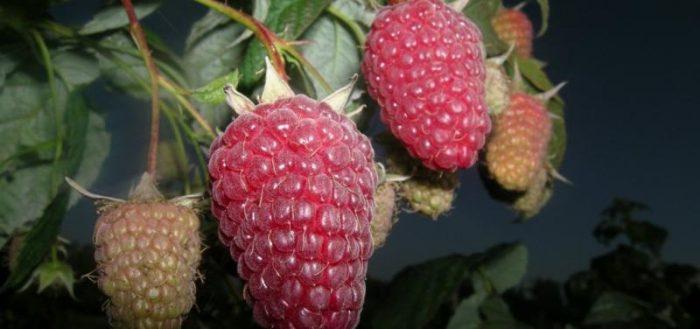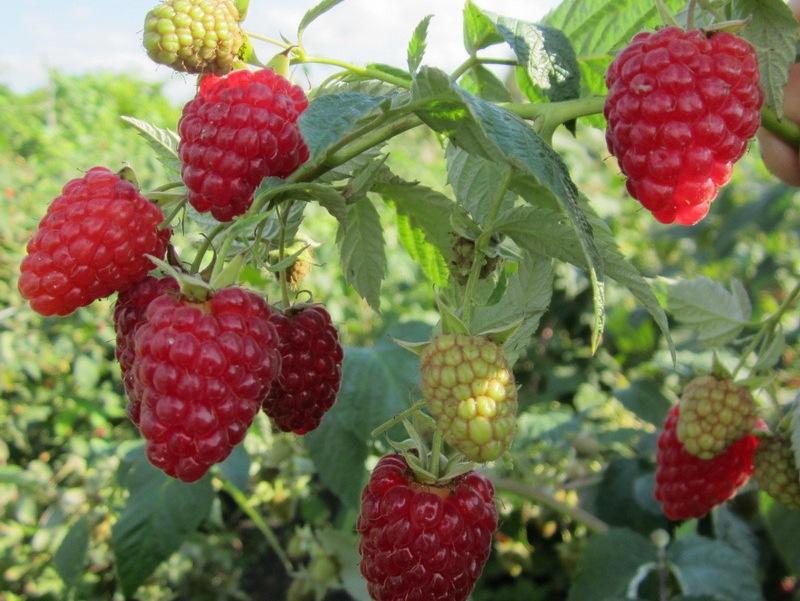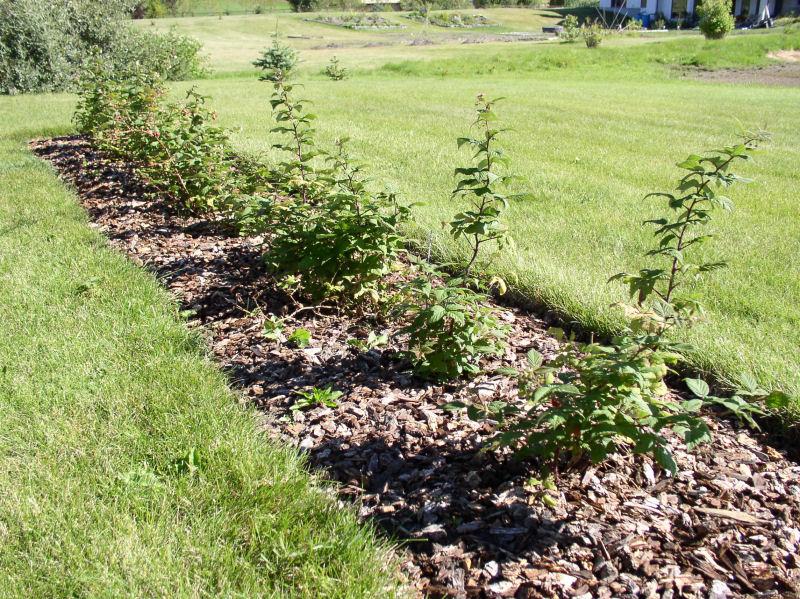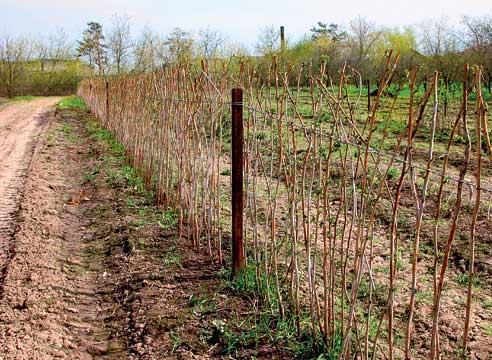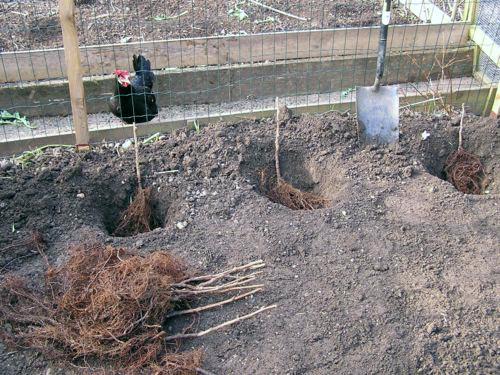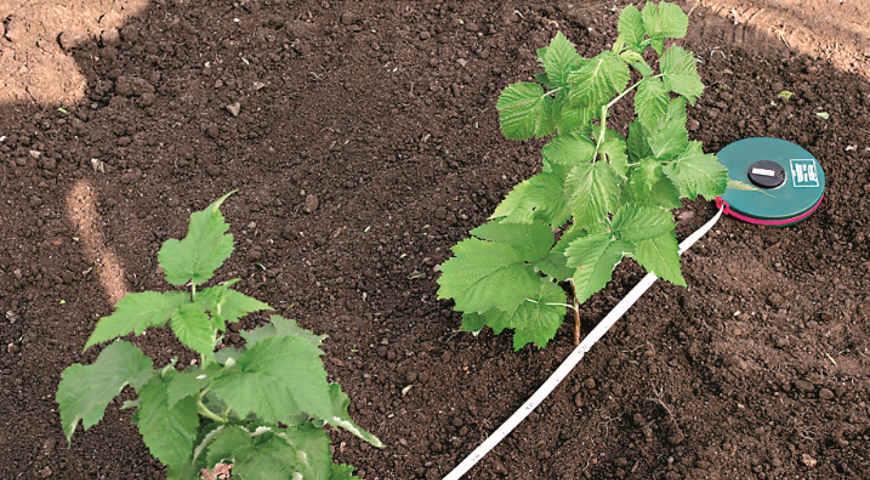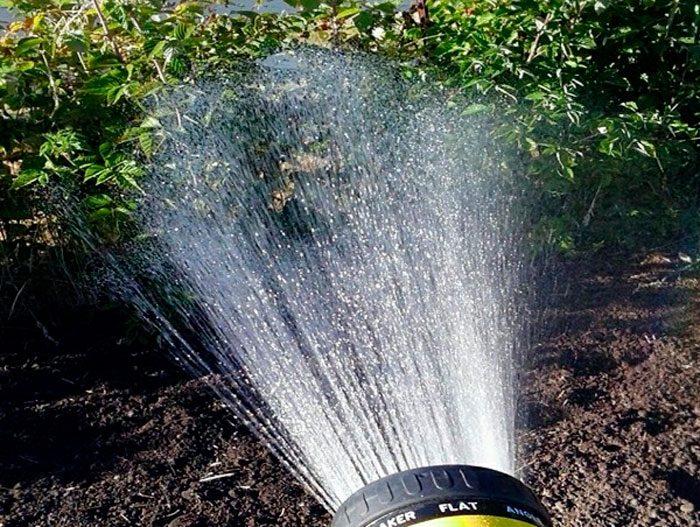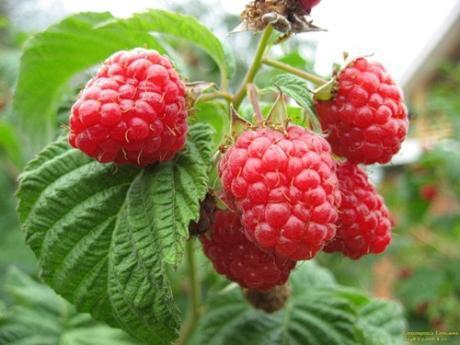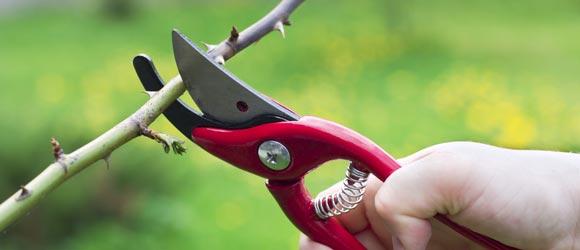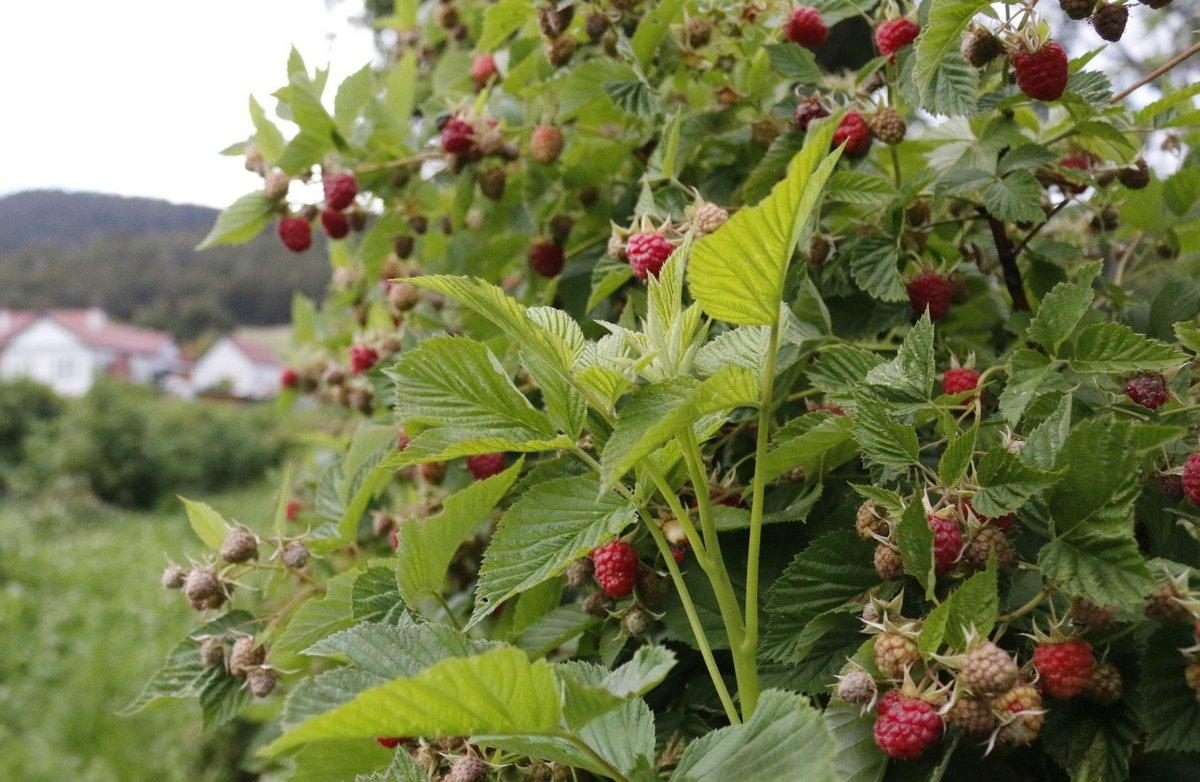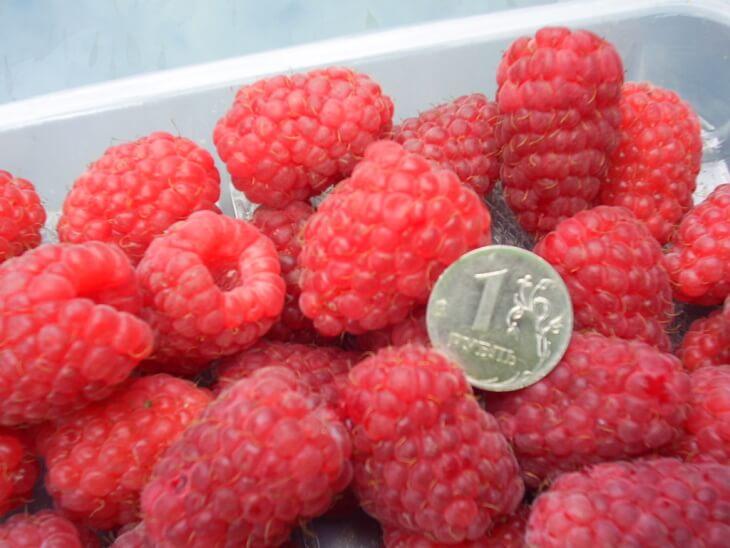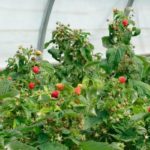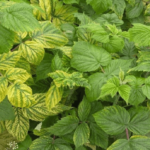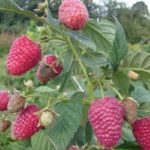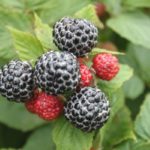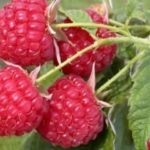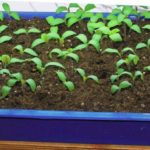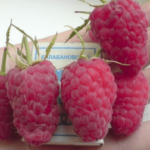Remontant types of berry crops have gained popularity among gardeners because their fruits can be enjoyed all season long. Many plant hybrids have been bred, among which the description of the Atlant raspberry variety is interesting. Considering the positive qualities of the crop, you can grow it on your own plot, receiving harvests of delicious berries every year.
- Description and characteristics of raspberries
- Productivity
- Description of the bush and berries
- Resistance to diseases and pests
- Frost resistance
- Usage
- Advantages and disadvantages of the Atlant variety
- Rules for growing raspberries
- Landing dates
- How to choose seedlings wisely when purchasing
- Selection and preparation of a site
- Process and scheme
- Subtleties of plant care
- Watering and fertilizing
- Weeding and loosening
- Mulching the plant
- Trimming
- Preparing for winter
- Diseases and pests of culture
- Breeding methods
- Cleaning and storage rules
Description and characteristics of raspberries
Before choosing raspberry seedlings, you need to familiarize yourself with the characteristics of the variety. It is important for the gardener that the plant is unpretentious and tolerates low air temperatures well. It is also necessary to pay attention to the resistance of the hybrid to diseases.
Productivity
A distinctive feature of Atlant raspberries is its high yield. The berries are picked for the first time in mid-summer, July. The harvest ripens on two-year-old shoots. The second harvest of fruits occurs in August. They ripen on shoots that appear in the spring. If you properly care for the bushes, you can collect 3-4 kilograms of juicy and sweet raspberries from the bush.
Description of the bush and berries
The remontant raspberry variety Atlant has:
- weak spreading of bushes;
- developed root system;
- shoot height up to 1.6 meters;
- thorns on branches at the bottom of the bush;
- dark olive color of young shoots, and old shoots with a slight waxy coating;
- large dark green leaves, wrinkled, with jagged edges;
- berries are dark red in color with a glossy sheen.
Raspberry fruits are elongated-oval in shape and grow to 6-8 grams each. The pulp contains more sugar than acid. Tasters give 4.2 points to the taste of the berries. When ripe, raspberries do not fall off and hold tightly to the branches.
Resistance to diseases and pests
Summer residents growing remontant Atlant raspberries on their property note that the variety rarely develops fungal and viral infections. To protect bushes from attacks by pathogenic microorganisms and insect pests, it is necessary to carry out preventive measures on time and properly care for the crop.
Frost resistance
The variety tolerates winters with severe frosts and heavy snowfalls. But in steppe regions with little snow, it is necessary to cover the shoots by first bending them to the ground. The material used is straw and spruce branches. If the bushes are pruned in the fall, then you don’t have to cover the plantation. The roots tolerate the cold weather successfully.
And the variety is resistant to drought, since the plant’s root system is branched and powerful. The only thing is that the berries will be small and sour.
Usage
Juicy raspberries are suitable for:
- fresh consumption;
- drying;
- making jam, compotes;
- freezing.
The stability of yields, high transportability and marketable appearance of the fruits make it possible to choose a crop for cultivation on an industrial scale.
Advantages and disadvantages of the Atlant variety
The positive feature of the berry plant is that it:
- does not need a garter;
- tolerates heat and drought well;
- bears fruit until frost all summer with a short break;
- It does not require special care;
- produces yields in the first year after planting.
When ripened, raspberry fruits do not fall to the ground, but remain firmly on the bushes. They rarely rot or lose their shape. They can be transported over long distances.
The disadvantages of the hybrid are that the berries are inferior in taste to ordinary, non-remontant types of raspberries. Although the plant pollinates itself, for better berry set it is necessary to plant other raspberry varieties nearby.
Rules for growing raspberries
Planting a remontant raspberry plantation must be carried out competently and on time. Proper planting is important for the further development and growth of the crop; it plays a role in obtaining high yields.
Landing dates
The time for landing is chosen depending on the climate. In the south, seedlings can be placed in open ground in the fall.The late start of winter will allow the raspberries to strengthen, adapt and begin to grow.
In Siberia, the Urals, and central Russia, it is better to plant the remontant hybrid Atlant in the spring. Over the summer, the bushes will have time to grow and become saturated with useful microelements. Then they will survive the winter successfully.
How to choose seedlings wisely when purchasing
For cultivation, annual seedlings are purchased whose stem thickness at the bottom of the root collar reaches 0.8-1.2 centimeters. The shoots should be:
- without damage;
- with 4-5 buds;
- with moist roots without areas of rot or cracks.
If the roots are long, they are cut off. Their length when planting is at the level of 10-15 centimeters. Acquired shoots are shortened to 15-20 centimeters before planting.
Selection and preparation of a site
You should be careful when choosing a site for a remontant raspberry plantation. After all, in one place the plant will develop for 12 years. It is necessary to pay attention to sufficient lighting of the area. You can opt for partial shade. Raspberries do not like drafts and direct rays of the sun. The groundwater level should be 1.5 meters. Only then will the crop receive enough moisture, which is important for it.
The soil is cleared of weeds. Creeping wheatgrass and sow thistle have a particularly detrimental effect on the growth of berries. A month before planting, the area is dug up or plowed to a depth of 30-35 centimeters. Before this, up to 5-6 kilograms of manure and 30-40 grams of superphosphate are scattered per square meter. Acidic soils need neutralization with ground limestone (0.2 kilograms).
It is better to carry out work in the fall, and after the snow has melted, add 15-20 grams of ammonium nitrate for cultivation.
Process and scheme
There are several ways to plant raspberry shoots Atlant:
- The seedlings are placed in trenches at a distance of 90 centimeters from each other. The rows are laid at intervals of 1.5 meters.
- The nests are made measuring 35 x 35 x 30 centimeters. 2-3 seedlings are placed in each. This is how you get a strong bush that bears fruit well.
- Groups of seedlings of 2-3 each with a distance of 60-70 centimeters are placed in curtains.
- Use a triangular planting, placing raspberries in the corners. The sides of the figure are 0.5 meters.
It is better to plant plants vertically so that the surface roots are located at a depth of 4-5 centimeters. Holding the shoot of the crop with your right hand, fill the hole with your left. Then the soil is compacted and the plantation is watered.
Subtleties of plant care
To achieve optimal ripening time for Atlant raspberries, you need to properly care for them. Agrotechnical measures carried out in a timely manner will help plants be resistant to natural disasters and diseases.
Watering and fertilizing
Berry plantings are moistened abundantly in the first year. Although the Atlanta variety is drought-resistant, the fruits will be small and dry if the plants do not have enough moisture. Therefore, they are watered 3 to 5 times per season. For each bush use 2-3 buckets of water. If the area is mulched, then 3-4 buckets per square meter is enough.
Berry yields increase when fertilizer is applied annually. In early spring it is necessary to feed with ammonium nitrate. 15-20 grams are diluted in half a bucket of water and watered the bushes.
Before the raspberries begin to ripen, you need to water them with a solution of slurry. From mineral fertilizers, you can take potassium salt (15 grams), saltpeter (10 grams) into a bucket of water. It is permissible to replace potassium salt with 30-50 grams of wood ash.
After picking berries in the fall, feeding raspberry bushes consists of superphosphate and potassium salt.
Weeding and loosening
You need to weed the plantation of remontant raspberries regularly, do not wait until it becomes overgrown with weeds. In the summer, row spacing is treated 4-5 times to a depth of 5-7 centimeters.
It is necessary to loosen the soil on a plantation after heavy rains and waterings. If the soil is too dense, then food and air will not reach the roots.
Mulching the plant
In dry areas, it is advisable to completely mulch the raspberry plantation. Lay mulch in strips, covering the plant rows with a layer 8-10 centimeters thick and up to 70 centimeters wide. Manure, humus, and tops of garden plants are usually used. Spread the mulch in a timely manner on moist, weed-free soil. In spring or autumn, the layers are dug up, embedded in the soil. This will solve the problem of fertilizing. And mulched rows need to be watered less.
Trimming
The bushes are formed by removing shoots every year. In the 3-4th year of a raspberry’s life, up to 15 shoots are formed, not counting the fruiting ones. The rest are cut out at the base. Removal is carried out on those offspring that are weak and densely located to each other. In June, before flowering, the bush needs to be rationed. Strong offspring are left in 12-15 pieces so that they are located at a distance of 15-20 centimeters from each other.
Old bushes are gradually replaced by young ones formed from root shoots.
Preparing for winter
Remontant raspberries are pruned before wintering. Then the roots will overwinter successfully. If you just shortened the shoots, then you need to bend them to the ground, sprinkling the ends with earth. This work is carried out until mid-October.
As soon as snow begins to fall, they try to cover the plantation with a fluffy blanket of snow. During winters with little snow, pine paws, plant tops, and straw are used as covering materials.
Diseases and pests of culture
One of the common diseases of the Atlant raspberry variety can be purple spot. It must be combated by spraying with Bordeaux mixture 2-3 times during the summer, starting from the period when the buds are exposed. Then every 2-3 weeks. The drug “Rubigan”, ammonium sulfate, is effective against pathogenic fungi.
Among the pests that can affect the plantation are aphids, spider mites, raspberry weevils, and raspberry beetles.
Aphids are combated by spraying with tobacco decoction. A kilogram of tobacco dust is infused for 24 hours in 5 liters of water, then boiled for an hour. After settling, take 0.5 liters of broth, pour it into a bucket of water, add 100 grams of laundry soap. All that remains is to properly process the raspberry bushes.
Spider mites nest on the underside of leaves. The surface is pollinated with sulfur powder to eliminate the parasite. You can destroy the pest by treating it with an infusion of onion peels. Raspberry beetle larvae hide in the soil, so you need to dig up the soil in August before winter. It is better to combat weevils with insecticidal preparations.
Breeding methods
To propagate the Atlant raspberry variety, you need to:
- Prepare cuttings in the spring. They are placed in trenches, sprinkled with earth, and covered with film. Replant when young shoots appear.
- Secure the side shoot and cover it with soil. When roots appear, they are separated from the mother bush.
- Dig up root suckers and transplant them to another area.
- Prepare or purchase seeds. Plant raspberry seeds in the ground, keep in a warm place until the sprouts sprout. Then place the seedlings on a lighted windowsill or in a greenhouse.
Atlant raspberries are grown faster and more successfully using vegetative methods. At the same time, the plants retain their varietal characteristics.
Cleaning and storage rules
Raspberries are harvested as they ripen, first in July, and then at the end of August - September. Within a month after the first ripe berries appear, the harvest is harvested. Place the berries without the stalk in baskets. You can immediately process the raspberries into jam. In a cold place it will keep for 4-6 days. It is better to collect fruits every 1-2 days. Then they will be moderately ripe, firm, and will retain their presentation well.

